|
Friday, July 28, 2007
Progress Notes
Some photos of volunteer staff will begin this week's Progress Notes. Last Friday we had board members Wanda Wright and Sharon Cogdill (photo 1) hosting the museum. As you can see they were enjoying the noon meal on the porch of the museum where always a cool breeze wafts its way up from the valley on the west where runs the old Tuscumbia Versailles road, then it crosses the hill top where the museum is located on highway 52 and then drifts down to the valley below on the east where one of the larger springs of the county is located. Recently a large lake was made for which the spring and rain runoff have been filling for the last year. This land was one of the original Goodrich family farms.
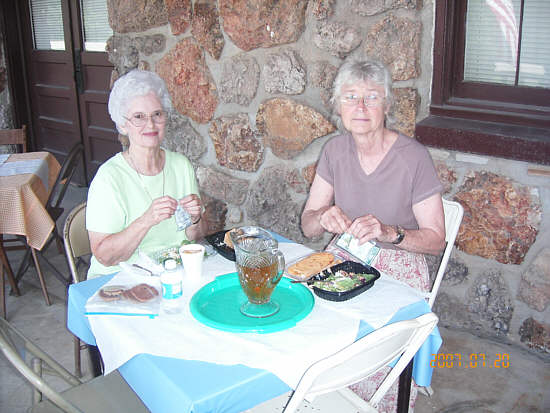 Wanda Wright and Sharon Cogdill This week on Wednesday we were honored to have as hosts Doris Woods and Rose Ann Sewell (photo 2). Doris, who used to live between Tuscumbia and Eldon, remembered riding the school bus to school in Tuscumbia which was driven by my grandfather, Madison Bear. Doris's husband, Joe Woods, is well known as being one of the first radio and T.V. repairmen in the area. I remember that he helped us with our first T.V. in the early fifties. Dad had ordered a T.V. that he saw in the Sears Roebuck catalogue. When it arrived everyone around town was curious because it was the first one in town. The aerial was placed on the roof by my dad and others from around town. Great excitement was present which meant we had lots of help. But we hadn't considered the fact that no T.V. station was nearby. In fact, the nearest T.V. station was in St. Louis, one hundred eighty miles away. After all wires were hooked everyone gathered around while dad located the knob which turned on the T.V. But nothing came on, only snow flakes. Try and try but no picture appeared and the only sound was static. Barney Flaugher, who was helping, finally sat down with a somewhat disappointed look on his face, but after looking at the T.V. in its varnished wooden casing for awhile looked up and said, " Well, Harold (my dad), I will have to say it's a nice looking piece of furniture." And that was that as far as looking at T.V. until dad finally called Joe Woods and he came down and put some type of amplifier on the aerial after which we got a picture and sound once in awhile coming down from St.Louis, sometimes at the same time. But it wasn't until Columbia got a station that we had decent reception. Barney Flaugher, who I just mentioned above, was quite a whittler with a pocket knife (he was well accomplished in all aspects of wood working). In our museum we have an exhibit of some of his pocket knife carving skills (photo 3). No metal is present in the hand tools shown in this display.
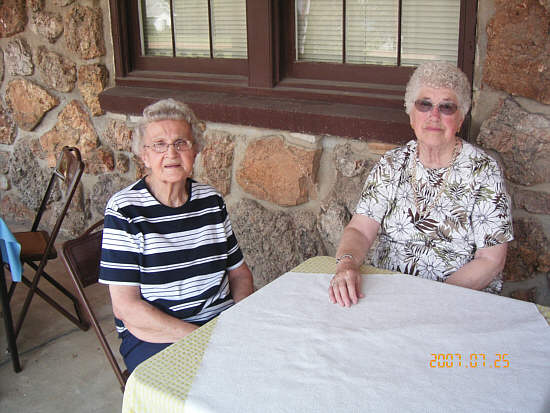 Doris Wood and Rose Ann Sewell
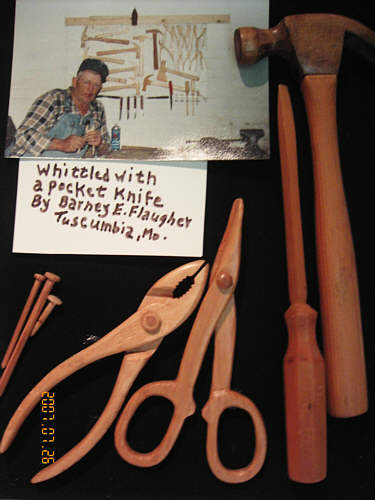 Barney Flaugher Exhibit Also volunteering Wednesday was RoseAnn Sewell. Her grandfather, Bird Kelsay, was a blacksmith years ago in Tuscumbia. In times past, Tuscumbia usually had more than one blacksmith and had at least one blacksmith up until my early twenties who was Elmer Flaugher. RoseAnn said that Bird's blacksmith building was located across the road from the where the old bank is now, overlooking Shut In Branch creek.
Among the many interesting visitors this week was one person especially so. She is Betty (Jobe) Harkless (photo 4) whose grandmother's grandfather was Pinkney Miller (photo 5), the first white person born in Miller county. Kudos to Sharon Cogdill, past President of the MCHS who had put together a poster board featuring the historical details of Pinkney Miller as well as his father, William Miller, detailing the important roles they played in Miller County's history. This display is located in the Research Room of the museum where we have a monthly revolving exhibit concerning various aspects of Miller County history. Mrs. Harkless was thrilled to have all the information at hand about her Miller family ancestor who was the first white child born in Miller County. His father, William Miller (photo 6), was instrumental in the obtaining the State of Missouri's recognition of the charter recognizing our county officially. You can learn more about the Miller family and its importance to the early history of our county by visiting our museum this month while this display is being posted in the Research Room.
 Betty (Jobe) Harkless
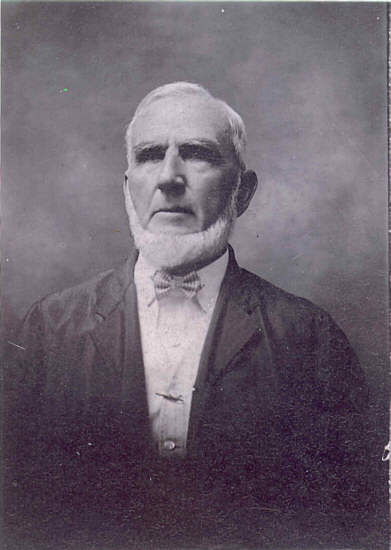 Pinkney Miller
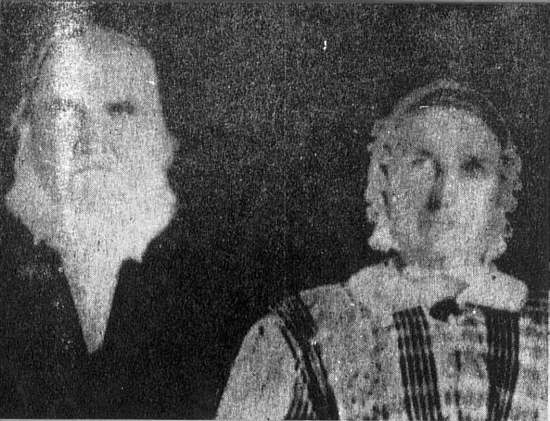 William Miller Another visitor to the museum this week was Alys Macias (photo 7). She and her husband Chuck live in Breckenridge, Colorado; however, Alys, who was raised around Fulton and Jefferson City, is interested in Miller County history because her great great grandparents, Isaac Thomas Wilson and his wife Clemmie (Perkins) Wilson lived in Miller County near Hawkeye around the turn of the last century. Two years after Clemmie died in 1912, Isaac left the area and eventually settled in Arkansas where he died. Clemmie was buried in the Curry Cemetery (photo 8) where her tombstone (photo 8a) still can be found today. Eula (Poppewell) Steen (wife of Waldo), who was raised on a farm in the area between Brumley and Hawkeye, has told Alys's father, Al Cates, that she remembered seeing Isaac frequently as he rode by her home on his horse on trips to Brumley to buy supplies. He wouldn't get off his horse but "turned and hooked his knee over the saddle horn while his horse rested as she brought him a cold drink of water from the well."
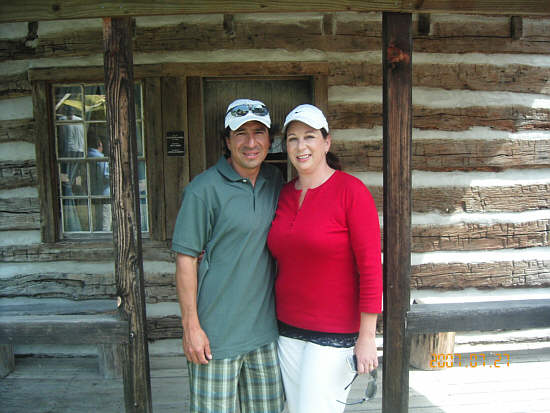 Chuck and Alys Macias
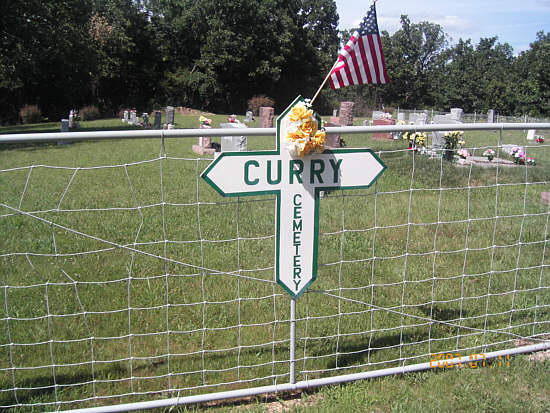 Curry Cemetery
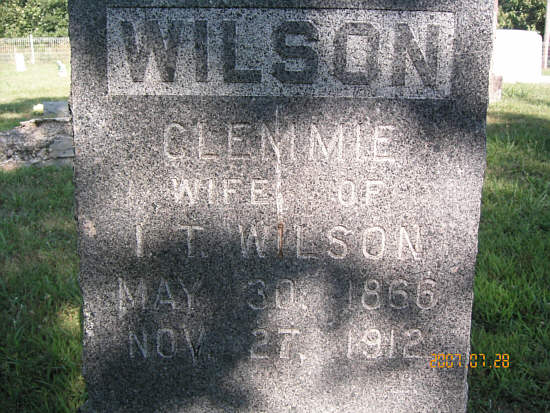 Clemmie Wilson tombstone As a followup to last week's discussion of the accepted custom years ago of the production of "Minstrel Shows" as a form of public entertainment, an event which now is considered unacceptable because of its racial insensitivity, I came across another form of insensitivity to the feelings of other people when I came across a photo in my files in which the caption read "Mayan Indians".
It was said to have been sold to one of the family by a vendor with a traveling circus show which came to Tuscumbia every summer. In my youth these shows were located in Riverside Park and included the usual things such as rides for the kids and all kinds of games of skill to win prizes. Also, many times a big tent was present for various types of activities. I remember one year a man, who was touted as being a boxing champion, was present and he would challenge anyone to try to win a prize by defeating him. Finally, Alan Burks, one of our best boxers in town, stepped into the ring and had a go at it. Alan won. But the build up to the fight brought so many people that the show owner made a lot of money. At any rate, occasionally one of the show tents would have a big sign in front which clearly read, "Freak Show", and inside truly there were some unusual appearing people . I saw bearded ladies, midgets, very obese people, and people with multiple "bumps, knots, and warts" (today I know that these individuals had been born with a disease known as neurofibromatosis). Also present were people with various types of anatomic deformities. Well, the photo mentioned above was said to have been sold at one of those shows. The origin of it is unknown to me otherwise. Having traveled in Mexico in the Yucatan I have seen a lot of Mayan people. Although they are shorter than average the heads are not disproportionately small as in these photos, which causes me to believe these two individuals, perhaps indeed Mayan, probably were suffering a congenital microcephaly (unusually small head) and may have been part of one of those "freak shows." I noticed the swastika on the sweaters of the children so I asked our museum director, Nancy Thompson, if that indicated the photo was taken during the Nazi era, perhaps in Germany. The following is her answer:
What an interesting photograph. No, I haven't seen it before. Judging by the shoes worn, this photo probably predates the Nazi era. I remembered that the swastika was an old symbol and didn't originate with the Nazis. I have seen a very old, red and white quilt, made in this country, featuring the swastika. Google came up with some interesting history:
The Swastika is persistently associated with the sacred fire-sticks. Agni was the god of the fire-stick (swastika).
In Great Britain it was called dfylfot from the Anglo- Saxon fower-fot-four footed or many footed. The Druids were said to have shaped their trees in the form of the swastika or fylfot cross.
The Swastika was the cross of the Manicheans and was their sale symbol. During the second and third centuries the swastika was the only form of cross used by the Christians.
The swastika touched everywhere, and wherever it appeared, like the wheel, it was looked upon as the symbolical representation of solar energy. The swastika with its 'bent arms poised for flight' was the symbol of motion, good fortune, long life, and has been looked upon from earliest times as a charm or amulet that brings good luck.
https://www.symbols.com/symbol/swastika-symbol
It is certainly a curiosity.
Nancy
Our culture has changed now and these types of events, which used people with disabilities or deformities as a from of public entertainment, of course, are no longer present.
The other day I needed a key made but neither Lowe's nor Orscheln's had the right template so I was referred to Harold's Key shop in Eldon. I had not been there before but it was easy to find on the west side of Maple street across from Henley' Jewelry store. When I walked into store, which is somewhat narrow since it used to be the location of Ahart and Crum's bar many years ago, I saw the biggest collection in one place of keys, key chains, and locks I have ever seen (photo 10). While my key was being made (which by the way was no problem) I spent my time looking at all the keys and locks. Finally, I asked Mae (Musick) Franken, wife of Harold the locksmith, to tell me how such a big collection was accumulated. Mae, whose family roots are from around Brumley (her father was Frank and grandfather was Joe Musick) called Harold (photo 11) over and he began to show me some of the unusual items he has collected over the many years he has been in the business (his business was named by the Eldon Chamber of Commerce as "Best for 2007"). Harold pointed out the 2000 key rings, hundreds of keys, padlocks, door locks, handcuff keys and locks, locks for railroad switching stations, and just about any other type of key or lock ever made. Some of the more interesting ones he has includes a connecting door lock from the old Miller County Jail, a shackle lock as well as a key from the same place, a Chinese lock, Fish lock, a device used by Ford Motor Company to cut out car keys, and he also had a canister of tear gas that in times past was placed in safes designed to exploded if the safe door was violated (see photos 12-17). I was just amazed that if one looks, one can find a little Miller County history in some of the most unlikely places.
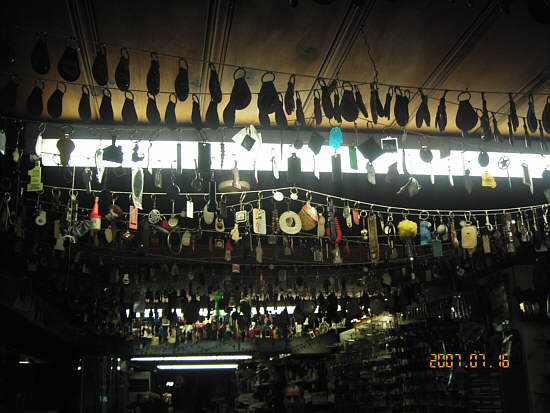 Thousands of Keychains
 Harold Franken
 Chinese Lock
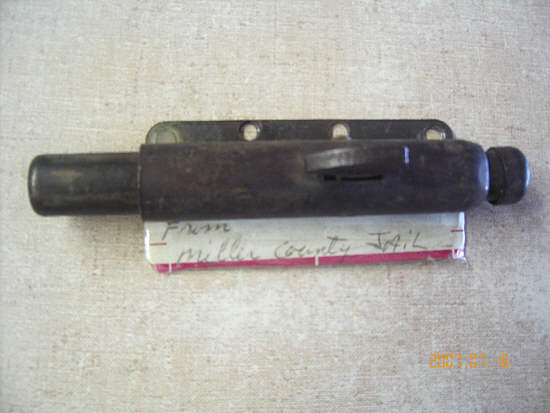 Connecting Door Lock County Jail
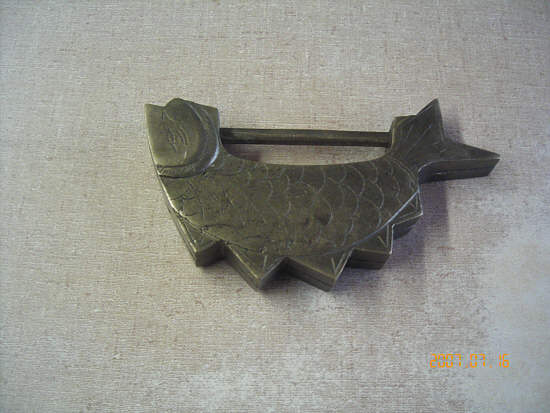 Fish Lock
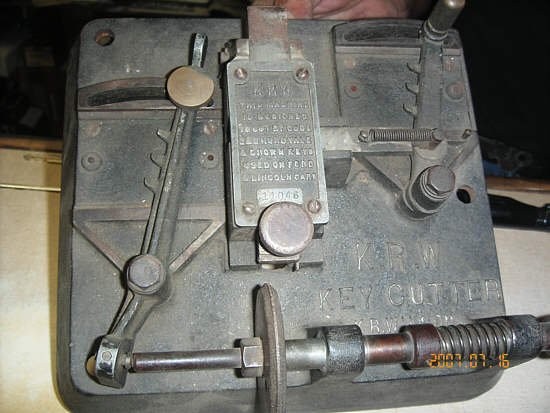 Ford Motor Co. Single Side Key Cutter
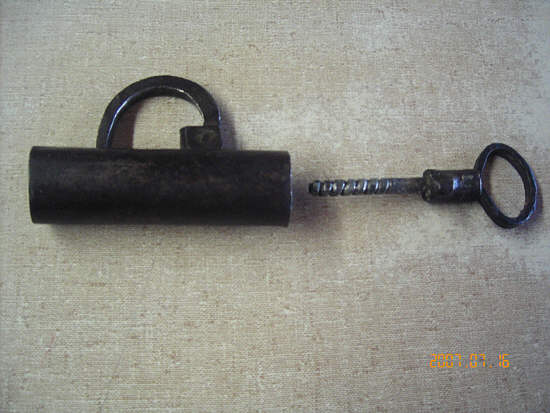 Shackles Lock
 Tear Gas for Safe Traveling through rural Miller County you will find a lot of old log cabins or houses still standing which were at one time homes for the early residents of the county. It is interesting that log houses are now becoming an item of interest to collectors who actually buy and move them to another location. Of course, the Miller County Museum moved two old cabins of historic significance to its site in Tuscumbia (photos 18,19). It may not generally be known, but a lot of log buildings were framed over with wood or other types of siding in years past and the fact that they were originally made of logs isn't recognized. Because they are a disappearing species I have been taking pictures of log houses and cabins when I run across them. Here are some photos of recent ones I have photographed. The Lewis Wall cabin (photo 20) was built by Herman Shelton and sold to Virgil Wall, Lewis's father . It was built in 1932. The farm has 120 acres and is near Barren Fork Creek west of Iberia. Lewis (photo 21of Lewis and Helen Wall) was raised in this cabin. Another old log house still standing (photo 22) is that of Absalom Bear (photo 23) near Hickory Point. It has been partially sided over by wood in the past.
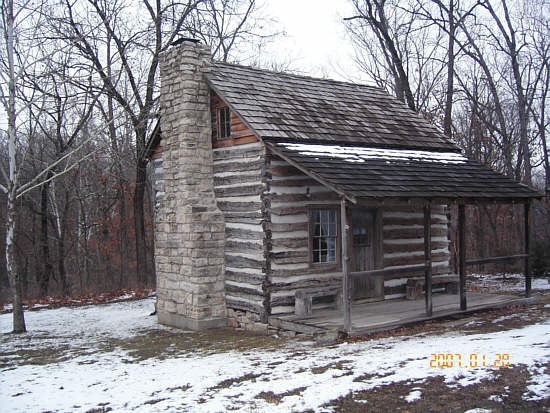 Lupardus Cabin
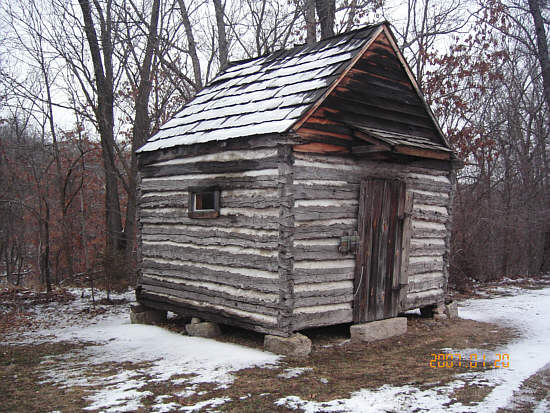 Williams Cabin
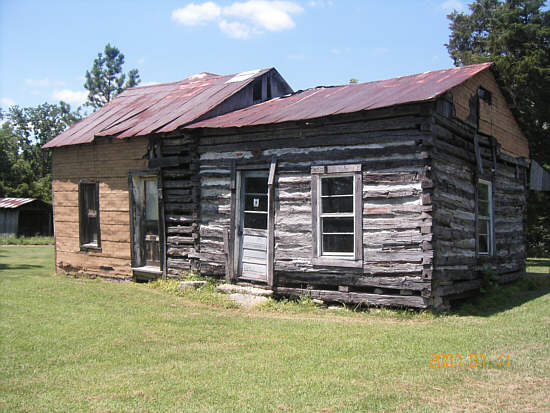 Lewis Wall Cabin
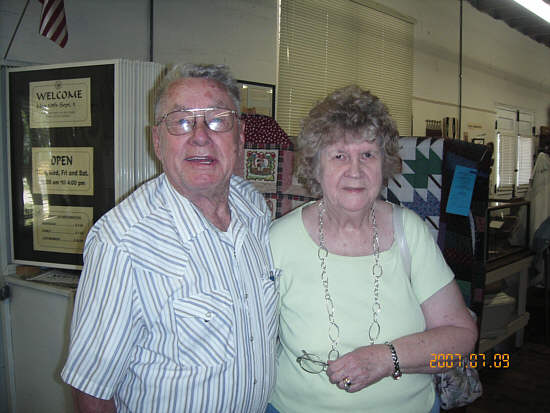 Lewis and Helen Wall
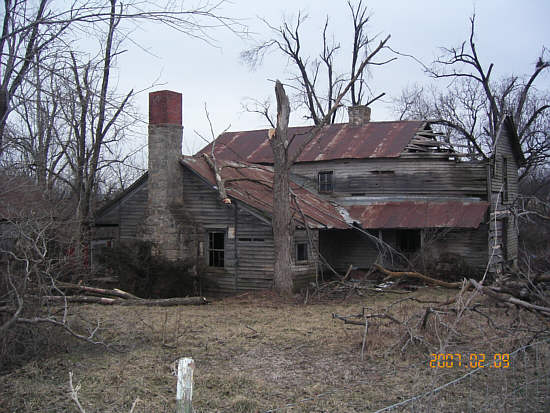 absolom bear home
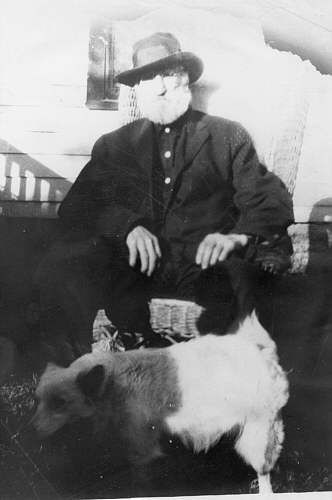 Absolum Bear at home Another interesting log house was built around the turn of the last century by John Wright, the Miller County artist, about whom I wrote in a couple of previous narratives. Although John was born on Saline Creek north of Tuscumbia, he raised his family just over the line in Camden County. He built his house of logs but subsequently put wood siding on it. His granddaughter, Corrine Gillian (photo 24), who is a board member of the Miller County Historical Society, was raised in this house. Corrine took me and some of my family over to see it the other day (photo 25). John never built anything without putting his distinctive touch on it. For example, for this house John made some sculptured columns for the porch out of concrete (photos 26, 27). Another couple of photos reveal some of the other features of this old originally log house. (photos 28, 29). While we were touring the house Corrine told us an interesting story concerning it:
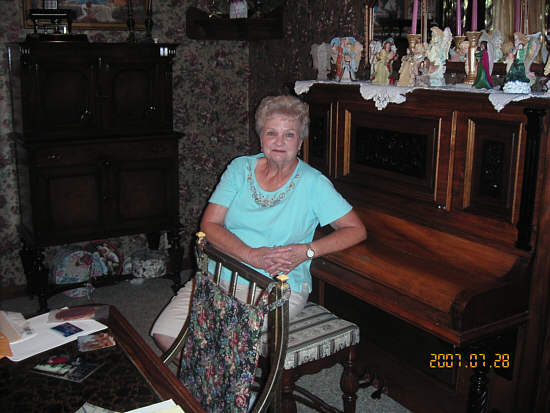 Corrine Gillaiin
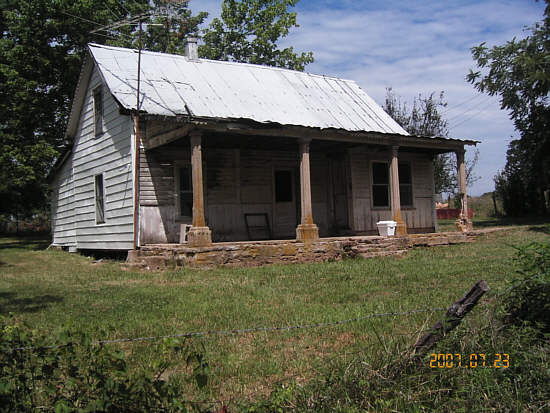 John Wright House
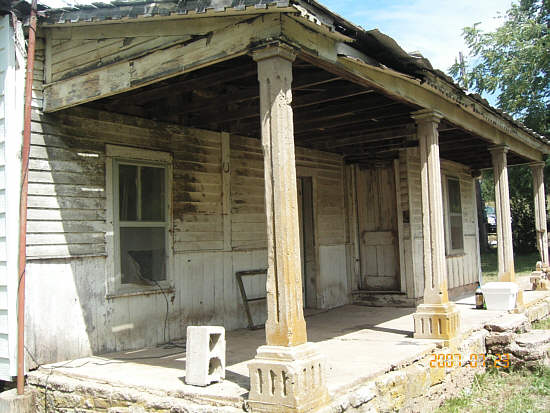 concrete columns John Wright House
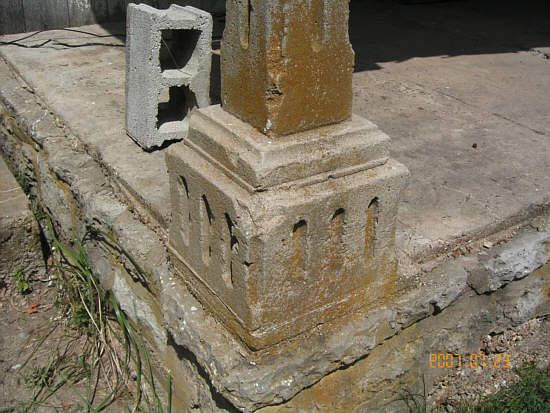 concrete columns John Wright House
 hand hewn beams 2
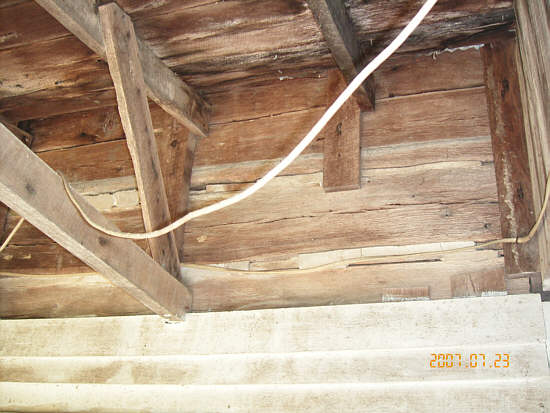 inside wall showing original logs
In 1996 the largest manhunt in the history of the state of Missouri in search of fugitive Alis Ben Johns (photo 30) took place. For six months state police and local authorities chased and tracked Johns over the deep woods and hills of several Ozark Counties of this area including Miller, Camden and Morgan Counties. Johns had brutally killed three innocent victims but was eluding law enforcement officers at every turn due to his cleverness and ability to survive in the woods living off what he could kill, catch or steal. Several times the law came close to catching him but he escaped. One of those times involved the home place of Corrine, the John Wright house. Apparently, for a short time in the fall of 1996, the house was one of Johns' hiding places. For several weeks, according to Corrine, who was living where she lives now in a large beautiful brick house built by her husband located near the Wright house, the entire area had been under surveillance by ground and air units of the Highway Patrol. She and her husband could hardly go outside without drawing attention to the circling helicopters above her house. She knew that Johns must have been close by, but no one had sighted him. Josephine Thornsberry, who was the current owner then of the old unoccupied Wright farm house, had suspected Johns might have been staying off and on in the house because she thought some of the furniture and other household items were being moved around. Also, it was known that the parents of Johns' girlfriend had lived there in the past. Well, one fall night in 1996 the law enforcement authorities suddenly began to move in surrounding the old house on all sides. As the officers approached the house in the darkness they smelled smoke and saw a few sparks darting out of the chimney suggesting the presence of someone inside. They were sure they had their quarry surrounded. Quickly they charged forward from all sides and broke down the front door. Directly ahead, where a doorway opened into the kitchen, they saw a partially dressed turkey strung up by its legs hanging over an uncovered wood heating stove with the top removed in which a hot fire was burning. The officers' momentary surprise at seeing the hanging turkey gave him enough time that Johns, who certainly was the one who had been hiding in the house, jumped out the kitchen window and crawled on his belly through the unmowed weeds surrounding the house and out into the field and escaped into the darkness.
For some inexplicable reason, neither men nor canine could locate him and he eluded them again. Fortunately however, he left the area and the search moved over to Morgan County where he eventually was apprehended. But for Corrine and her neighbors, finally they had some respite from all the commotion and insecurity aroused by the constant presence of law enforcement agents on the ground and the air as well as the repeated requests to remain in their homes while the recurrent searches were taking place around the area. Future testimony in the several court hearings which ensued after his capture revealed the remarkable information that Johns was considered mentally handicapped by the public schools due to a head injury he had suffered as a child.
 Alis Ben Johns While traveling through the southwestern side of Miller County with Corrine Gilliam last week we came across the old George school (photo 31). However, an older photograph taken in 1906 (photo 32) indicates that an earlier building apparently was used then made of wood siding rather than concrete as is the present structure. This is the school the John Wright family attended. The George School is in Camden County but a significant number of Miller County related people attended school there. A note on the back of the old photo (photo 33) indicates the position in the photo where some of the Wright children were located.
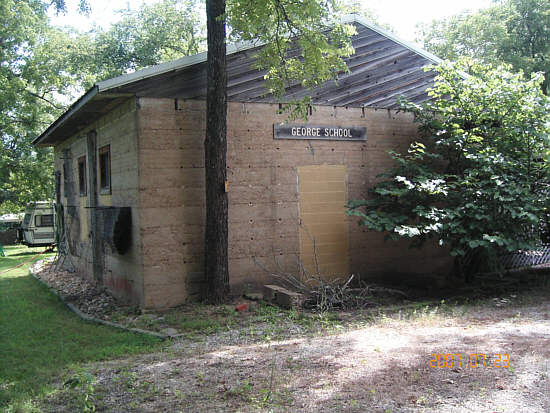 George School
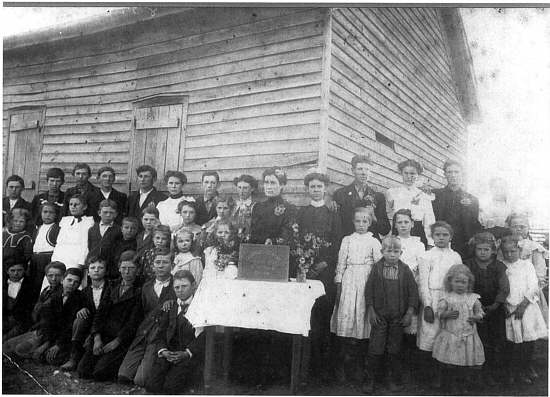 George School Camden Miller county line
 George School Photo (reverse) Construction of the new addition to our museum continues. This week the entry ramp to the lower level was completed (photos 34,35). We now have a new ramp which meets state specifications for wheel chairs and also a new drainage system; the black grating you see running through the middle of the walkway was custom made and cost more than five hundred dollars. We greatly appreciate all the donations you have been sending us; these so called little expenses add up. But the so called small donations add up as well, so even if you can spare only a few dollars but would like to help, it is appreciated.
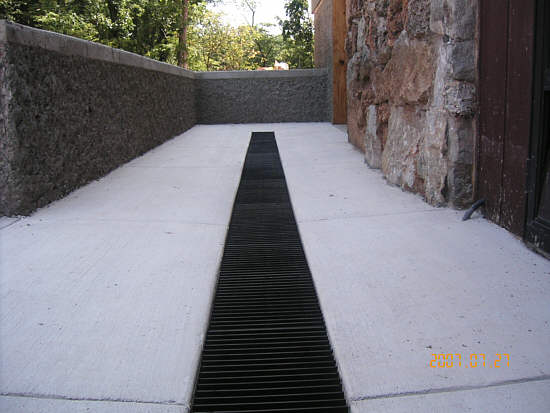 new entry and grating
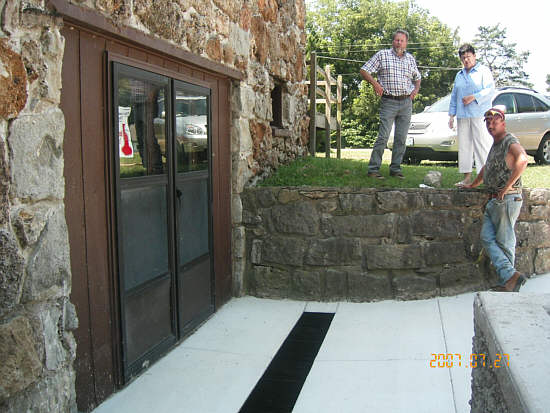 Paul Holder project director, Judy Pryor and Buster Busch
Donations can be sent to:
Miller County Museum Building Fund
P.O. Box 57
Tuscumbia Mo. 65082
This weeks's unusual item for you to see (photo 36) is in the collection of Bill and Betty Roark (photo 37) of Olean. They are historians regarding the Olean community and have let us scan many photographs having to do with the history of Olean which we plan to add to the website in the near future. Take a look at the photo to see if you can guess for what use this contraption was made before reading the answer below.
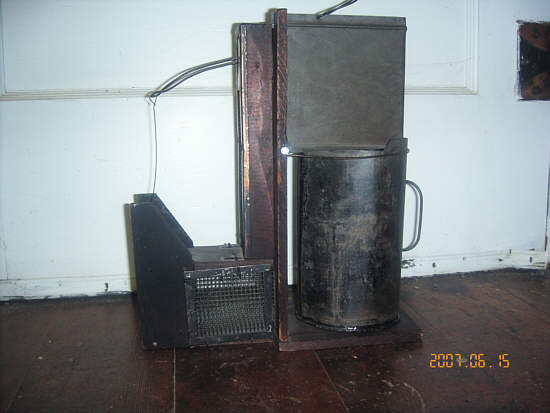 guess what
 bill and betty roark The answer is that this device was used as a mousetrap and had complete instructions accompanying it to describe how to set it up (photo 38). The mouse was enticed by bait to enter the bottom trap door, and since the bait was placed a little higher up the box the mouse climbed up a ladder inside which at the top had a trip release which dropped the mouse into the bottom of the box on the other side which contained water with a very high salt content such that the mouse was shriveled up making it easier to dispose. Several mice could be trapped in this way before one had to empty the dead mouse side of the trap. I just wonder who it was in the family designated to retrieve the shriveled up dead mice for disposal?
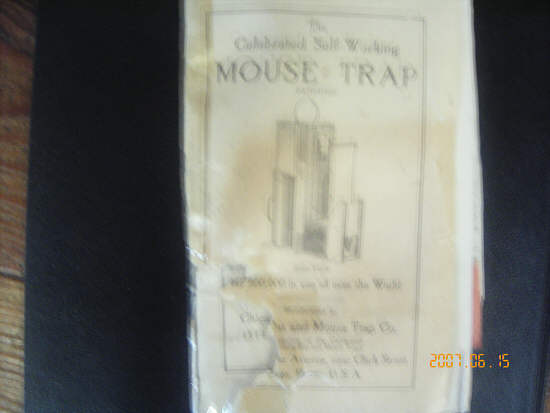 instructions Well, that's all that comes to mind this week. In the meantime, visit our site frequently because we add new items often. We now have enough interesting information about Miller County that it would take a long time to read it all.
|



